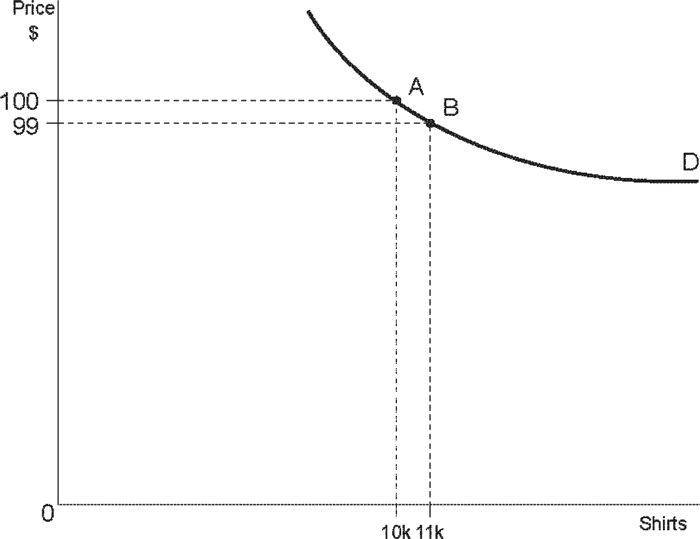Understanding What is Elasticity
The term elasticity in economics refers to the extent to which data of any kind are affected by changes in another factor. For example: how is the quantity of shirts bought affected by changes in the price of shirts.
The elasticity is expressed as a number. The higher the number, the greater the degree of elasticity.
The exact definition of elasticity for a particular product:
Elasticity = % change in quantity
Change of 1% in price
Example
We are examining the degree of elasticity of demand for shirts, which is the change (percentage) in the quantity of shirts that we want to buy as a result of a change of 1% in the price of shirts. In our example the initial stage is that the price of shirts is $100 and the quantity demanded is 10k shirts (Graph 14.1). (k = 1,000, 10k = 10,000).
The price of shirts is reduced to $99 (= a reduction in price of 1%).
The quantity demanded increases to 11k, an increase of 10% (point B)
In this example, the elasticity at Point A is 10.
Remember: The elasticity is not uniform over the demand curve. Thus it is important when discussing elasticity to state the point for which calculation is being made, in the following manner:
The elasticity at point A is 10. The elasticity at point B is 9 (assuming this is the case)
Graph 14.1



